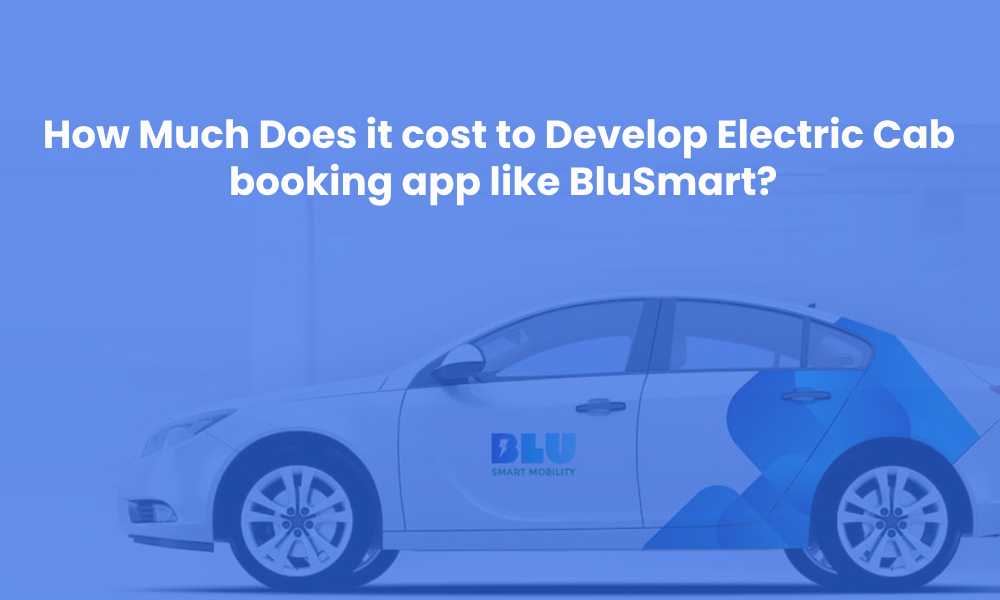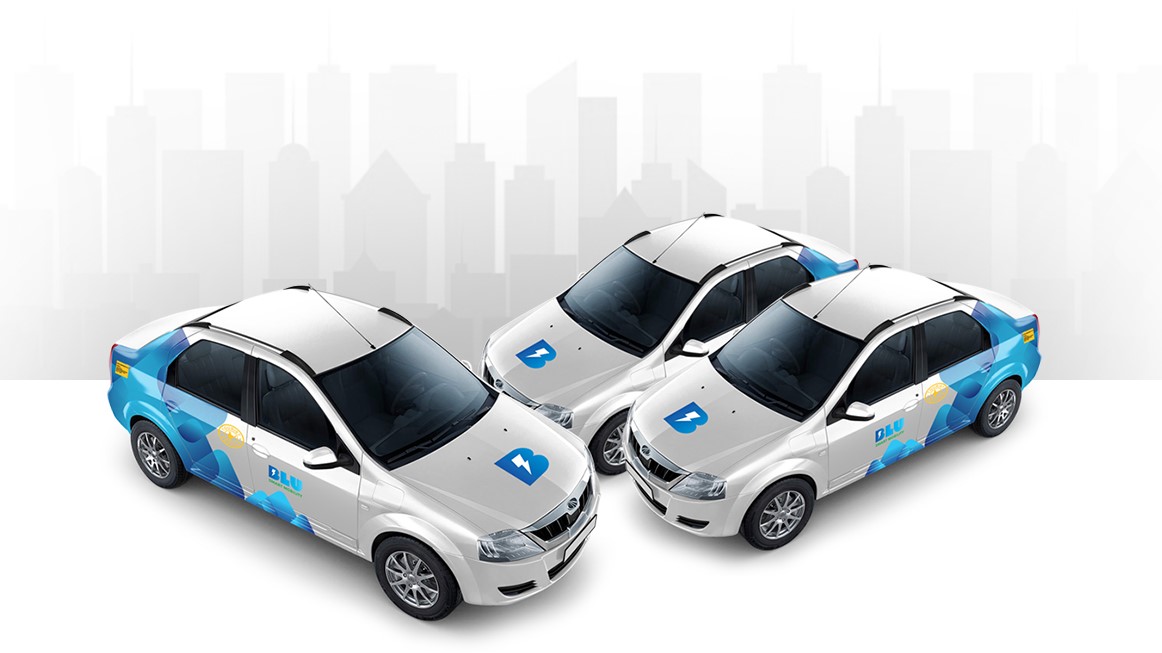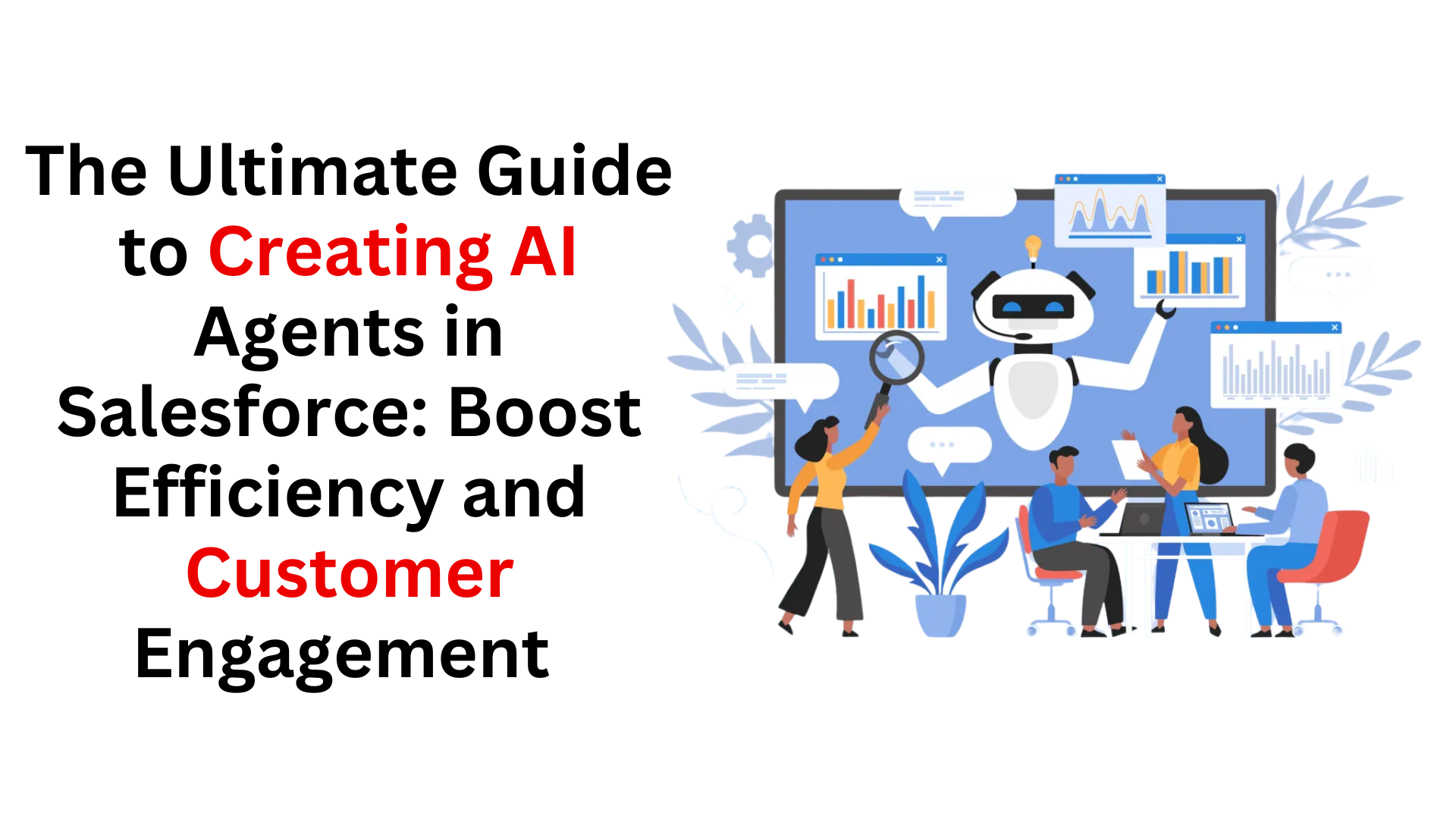
In a world where technology is rewriting the rules of transportation, electric ride-sharing apps like BluSmart are zooming to the forefront, revolutionizing how we move around our cities. Picture this: summoning an eco-friendly electric ride with just a tap on your phone. But have you ever wondered about the fascinating journey that leads to the creation of such a groundbreaking app?
Buckle up, because we’re about to take you on an electrifying ride through the realm of electric ride-sharing app development costs. Whether you’re a green-minded entrepreneur ready to innovate or simply intrigued by the inner workings of your favorite electric ride service, you’re in for an enlightening journey. We’ll be your tour guide, shedding light on the financial path of building an app like BluSmart.
No need for tech-heavy language – we as your trustworthy EV tech development company in India are here to unravel the financial story in a way that’s easy to follow. Prepare to unravel the financial investment that fuels innovation on wheels. Join us as we embark on a thrilling quest to uncover the cost of turning imaginative ideas into a tangible reality. If you’ve ever pondered the cost of merging sustainability and technology, get ready to recharge your knowledge. Welcome to your electric expedition into ride-sharing app development costs!
Why Invest in Building an Electric ride-hailing platform like BluSmart?
In an era of rapid urbanization and heightened environmental consciousness, the way we move within our cities is undergoing a remarkable transformation. Electric ride-hailing apps, poised at the intersection of technology and sustainability, are not just a trend but a crucial solution for the future. If you’re considering where to put your investment dollars, here’s a compelling case for diving into the electric ride-hailing app development platform:
Environmental Stewardship: With concerns about climate change and pollution escalating, the shift towards electric vehicles is no longer just a choice – it’s a responsibility. By investing in an electric ride-hailing app, you’re contributing to reducing carbon emissions and promoting a cleaner urban environment.
Growing Demand: The demand for electric ride-sharing services is on the rise as more people seek eco-friendly transportation options without compromising convenience. By investing in this sector, you’re tapping into a market that’s hungry for innovative solutions.
Regulatory Support: Governments around the world are incentivizing the adoption of electric vehicles to meet sustainability goals. This means that investing in an electric ride-hailing app aligns with favorable regulatory trends, potentially leading to long-term success.
Technological Innovation: Electric ride-hailing apps are a fusion of cutting-edge technology and transportation. Investing in this field not only drives the creation of advanced software but also encourages the development of smarter and more efficient electric vehicle technology.
Economic Opportunities: As the electric ride-hailing industry grows, it generates new job opportunities across various sectors, from software development to vehicle maintenance and charging infrastructure. Your investment can contribute to job creation and economic growth.
Global Impact: Electric ride-hailing apps aren’t limited by geographical boundaries. Your investment can have a global impact, influencing the way people travel in cities around the world.
Diverse Revenue Streams: These platforms can offer various revenue streams, including rider fees, driver partnerships, advertising, and even potential partnerships with vehicle manufacturers.
Creating an electric ride-hailing platform like BluSmart involves a careful selection of features to ensure a seamless experience for users, drivers, and administrators. Here’s a breakdown of essential features for each component:
Features to Include in BluSmart like App Development

User App Features:
User Registration: Easy sign-up process using email, phone number, or social media accounts.
Ride Booking: Quick and intuitive interface for users to request rides, specify pickup and drop-off locations, and choose vehicle preferences.
Real-time Tracking: Live tracking of assigned electric vehicles, estimated time of arrival, and route details.
Fare Estimation: Transparent fare calculation based on distance, time, and surge pricing (if applicable).
Payment Options: Multiple secure payment methods like credit/debit cards, mobile wallets, and digital payment gateways.
Ride History: Access to past ride details, receipts, and payment history for reference.
Ride Reviews and Ratings: Users can rate and review drivers and provide feedback on their experience.
Promo Codes and Discounts: Option to apply promo codes and avail discounts on rides.
Notifications: Real-time notifications about ride confirmation, driver arrival, and other important updates.
Emergency Support: In-app emergency assistance button to connect with customer support or contact authorities in case of emergencies.
Driver App Features:
Driver Registration: Easy onboarding process with document submission and verification.
Ride Acceptance: Option for drivers to accept or decline ride requests based on their availability.
Navigation: Built-in GPS navigation with real-time traffic updates to guide drivers to the pickup and drop-off locations.
Ride Status: The driver can update the ride status (arrived, started, completed) within the app.
Earnings Dashboard: Overview of earnings, completed rides, and daily/weekly summaries.
Communication: In-app messaging or calling feature to communicate with users.
Document Management: Ability to upload and manage required documents like driver’s license, vehicle registration, and insurance.
Ratings and Feedback: Drivers can view and respond to user reviews and ratings.
Offline Mode: Limited functionality for drivers in areas with poor connectivity.
Support and Help: Access to driver support, FAQs, and assistance for any issues.
Admin Panel Features:
Dashboard: Overview of real-time data, including active rides, completed rides, earnings, and user/driver statistics.
User Management: Ability to manage user accounts, verify documents, and handle user support.
Driver Management: Onboarding, verification, and support for drivers, including monitoring their activity.
Fleet Management: Control over the electric vehicle fleet, including maintenance and updates.
Ride Management: Access to ride data, including tracking, status, and fare details.
Payment Management: Monitoring transactions, handling refunds, and managing driver payouts.
Promotions and Discounts: Creation and management of promotional campaigns and discounts.
Reporting and Analytics: Generation of reports on user/driver activity, earnings, and performance metrics.
System Settings: Customizable settings such as surge pricing, service areas, and app features.
BluSmart App Development Process
Idea Generation and Conceptualization:
The journey begins by conceptualizing the vision for the electric ride-hailing app. This phase involves brainstorming the core concept, outlining the app’s purpose, and defining the key objectives that will set it apart in the market.
Market Research:
In-depth market research follows, delving into the target audience’s preferences, pain points, and behavioral patterns. This step provides valuable insights into the competitive landscape and helps identify trends and opportunities that can shape the app’s development.
Requirements Gathering:
Here, the app’s features and functionalities are meticulously outlined. These requirements span across the user app, driver app, and admin panel, setting the foundation for the development team’s understanding of what needs to be built.
Wireframing and Design:
Visualizing the app’s user interface is critical. Wireframing and design involve creating a blueprint of the app’s layout, user flow, and aesthetic design. This step ensures a user-friendly and visually appealing interface.
Technical Architecture and Backend Development:
The technical architecture is crafted, defining the technology stack and server structure. The backend development sets up the essential infrastructure, handling user accounts, ride requests, payments, and data management.
Frontend Development:
In parallel with the backend, the front-end development brings the app’s visual design to life. The user app and driver app are built, and optimized for both iOS and Android platforms while adhering to the design guidelines.
Admin Panel Development:
The admin panel is developed to facilitate efficient management of the platform. This web-based interface empowers administrators to oversee user accounts, rides, driver operations, and other aspects of the app.
Integration of APIs and Third-Party Services:
Integrating various APIs and third-party services adds dynamic functionalities to the app. This includes incorporating location services for real-time tracking, payment gateways for secure transactions, and communication APIs for notifications.
Testing:
Rigorous testing is conducted to ensure the app’s functionality, performance, and security. It involves identifying and addressing any bugs, glitches, or errors to guarantee a seamless user experience.
Quality Assurance:
Quality assurance encompasses the final polishing of the app. Addressing the feedback and issues found during testing, the team ensures the app meets the highest quality standards before proceeding.
Deployment:
With testing complete, the apps are ready for deployment. They are submitted to their respective app stores for approval while the backend is set up on a server to handle user interactions and data.
Launch and Marketing:
The highly anticipated launch phase arrives. The app is introduced to the public, and marketing efforts are put into motion. A carefully planned launch strategy leverages social media, press releases, and partnerships to drive excitement and adoption.
Continuous Improvement:
Post-launch, the app continues to evolve based on user feedback and performance analysis. Regular updates bring new features, enhancements, and bug fixes, ensuring a consistently improved experience for users and drivers alike.
What Factors Influence the BluSmart App Development?
Complexity of Features:
The complexity and number of features you want to include in your app play a significant role in determining costs. Features like real-time tracking, payment integration, ride history, driver ratings, and advanced navigation systems can contribute to higher development expenses.
Platform and Devices:
Developing for different platforms (iOS and Android) and ensuring compatibility across various devices adds to the cost. Native apps tailored to each platform often require more resources compared to cross-platform solutions.
Design and User Interface:
A well-designed, user-friendly interface is crucial for an app’s success. The complexity of the design, including custom graphics, animations, and user experience optimization, can impact development costs.
Backend Development and Infrastructure:
The complexity of setting up the backend infrastructure, including user authentication, data storage, real-time updates, and integration with third-party services (e.g., payment gateways, mapping APIs), can significantly affect costs.
Location-Based Services:
If your app involves real-time location-based services like tracking and mapping, the integration of these features can add to the development costs due to the technical intricacies involved.
Integration of Third-Party Services:
Incorporating third-party services, such as payment gateways, messaging platforms, and analytics tools, may require additional development effort and investment, impacting the overall cost.
Security Measures:
Ensuring the security of user data and transactions is essential. Implementing robust security measures, encryption protocols, and compliance with data protection regulations can increase development costs.
Testing and Quality Assurance:
Rigorous testing is crucial to delivering a bug-free and smooth user experience. The cost of testing and quality assurance activities, including identifying and addressing bugs, contributes to the overall project budget.
Team Composition and Expertise:
The size and expertise of the development team involved influence costs. Hiring experienced developers, designers, QA specialists, and project managers with a track record in app development might come at a higher cost.
Geographical Location:
The cost of development can also vary based on the location of the development team. Developers in regions with higher living costs may charge more for their services.
Project Timeline:
The timeline for app development can impact costs. Rushing through development to meet a tight deadline might require additional resources and, consequently, higher costs.
Post-Launch Support and Updates:
After the app’s initial development, ongoing maintenance, updates, and support are necessary. Including a budget for post-launch activities is crucial for the app’s long-term success.
Regulatory Compliance and Legal Considerations:
Depending on the region, industry regulations, data privacy laws, and other legal considerations might require additional development efforts to ensure compliance, impacting costs.
Scalability and Future Features:
If you plan to scale the app or add more features in the future, you should consider building a flexible architecture that can accommodate expansion. This might lead to higher upfront development costs.
The cost to build an app like BluSmart can vary widely depending on a multitude of factors mentioned above. Building a complex ride-hailing app like BluSmart with user apps, driver apps, and an admin panel can potentially cost anywhere from $30,000 to $500,000 or even more.
How does Oaktree software enable you to reduce the final BluSmart app development cost?
Efficient Project Management: Experienced development teams often use efficient project management methodologies to streamline the development process, minimize bottlenecks, and ensure timely completion of milestones.
Prioritizing Features: Identifying and prioritizing essential features over non-essential ones helps in focusing resources on delivering the core functionalities, reducing both development time and costs.
Reusable Components: Utilizing existing libraries, frameworks, and open-source components can save development time and effort, consequently reducing costs.
Cross-Platform Development: Cross-platform development frameworks can enable developers to write code once and deploy it on multiple platforms (iOS and Android), saving time and resources.
Outsourcing or Offshoring: Depending on location and expertise, outsourcing or offshoring certain aspects of development, like design or testing, to regions with lower labor costs can result in cost savings.
Iterative Development: Breaking down the development process into smaller iterations allows for continuous testing, feedback, and adjustments, leading to more efficient use of resources.
Minimum Viable Product (MVP): Developing an MVP with essential features for the initial launch allows you to enter the market sooner, gather user feedback, and reduce initial development costs.
Optimized Design: A simplified and optimized user interface and design can reduce development time and effort, without compromising user experience.
Scalability Planning: Implementing a scalable architecture from the start can help you accommodate future growth without the need for significant rework, saving costs in the long run.
Conclusion
Throughout our exploration, we’ve come to understand that the cost of developing a BluSmart-like app is not a one-size-fits-all equation. Rather, it’s a dynamic interplay of variables. The complexity of features, platform choices, design considerations, and the scope of functionalities all contribute to the final budget.
As we’ve seen, investing in a project of this scale involves a strategic commitment. From the spark of idea generation to the technical intricacies of backend development, each step involves thoughtful decision-making. The art lies in finding that equilibrium where innovation aligns with a budget that suits your goals.
Remember, while cost-consciousness is vital, it’s equally crucial not to compromise on quality. Skimping on critical elements can lead to subpar outcomes and higher costs down the road. Collaborating with experienced professionals, leveraging smart strategies, and embracing a realistic budget can set your project on a trajectory of success.
FAQs
What factors contribute to the cost of developing a BluSmart-like app?
The cost is influenced by factors such as app complexity, features, design, platform (iOS/Android), backend development, third-party integrations, team expertise, geographic location, and ongoing support.
Can I get a fixed price quote for developing an app like BluSmart?
Due to the customizable nature of app development, fixed price quotes might be challenging to provide upfront. An initial estimation can be offered, but exact pricing often emerges during detailed project scoping.
How does the design affect the cost of app development?
A more intricate and visually appealing design might involve higher costs. Design complexities impact development time, especially if custom animations and interactions are required.
Are there ongoing costs beyond development?
Yes, after launching, there are ongoing costs for maintenance, updates, server hosting, security patches, and customer support. These ensure the app’s continued functionality and user satisfaction.
Can I reduce costs by excluding certain features?
Yes, prioritizing features can help reduce initial costs. Developing an MVP with core features for the initial launch is a cost-effective strategy, allowing you to gather user feedback and evolve the app over time.
How does the choice of development platform impact costs?
Developing for both iOS and Android can increase costs compared to choosing a cross-platform solution. Native apps generally offer better performance but may require more resources.
Can outsourcing reduce development costs?
Outsourcing to regions with lower labor costs can potentially reduce expenses. However, careful consideration of the development team’s expertise, communication, and project management is crucial.
How accurate are cost estimates provided by development agencies?
Cost estimates from development agencies can provide a ballpark figure, but it’s recommended to have detailed discussions to ensure accurate estimates that align with your specific project requirements.
How can I ensure a balance between cost and app quality?
Balancing cost and quality requires smart decision-making throughout the development process. Prioritize essential features, work with experienced professionals, and plan for post-launch support.
How often should I review the app development budget?
Regular budget reviews are crucial as project requirements, features, and timelines might evolve. Stay in close communication with the development team to manage costs effectively.
What steps can I take to optimize app development costs?
Prioritize features, collaborate with a skilled team, utilize reusable components, consider cross-platform development, and plan for scalability and future updates to optimize costs.







